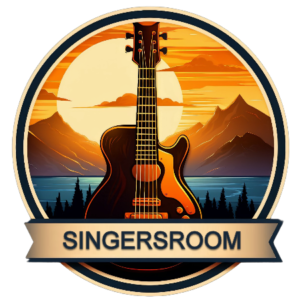If you’re an aspiring singer looking to improve your voice, or simply someone who wants to explore the joy of singing, finding the right voice lesson can be a game-changer. With so many options available, it can be overwhelming to find the best singing and voice lesson near you. That’s where we come in to help you narrow down your search!
Located in the heart of California, Azusa is home to a thriving music scene with several reputable voice and singing teachers offering personalized lessons to students of all ages and skill levels. Whether you’re a beginner or a professional looking to take your voice to the next level, Azusa has something for everyone.
In this article, we have compiled a list of the 10 best singing and voice lesson providers in Azusa, California, based on their teaching styles, reputation, student reviews, and affordability. From classical to contemporary, each of these vocal coaches specializes in different genres and techniques, ensuring that you find the perfect match for your vocal goals.
Whether you want to train for a singing competition, improve your vocal range, or simply want to sing your heart out, these 10 best singing and voice lesson providers in Azusa will help you discover your voice and reach your full potential.
1. Azusa Conservatory of Music

Website: http://www.azusaconservatory.org/
Address: 901 E Alosta Ave, Azusa, CA 91702, United States
The Azusa Conservatory of Music is a renowned music school located in Azusa, California. With a mission to provide quality music education to students of all ages and backgrounds, the school offers a wide range of programs in various musical disciplines, including voice, piano, guitar, violin, drums, and more.
The faculty members of the Azusa Conservatory of Music are highly experienced and accomplished musicians who are passionate about teaching and guiding their students towards achieving their musical goals. They employ a personalized teaching approach, tailoring their lessons to each student’s individual needs and learning style.
In addition to private lessons, the school also offers group classes, music theory and history courses, and performance opportunities for students to showcase their talents. The Azusa Conservatory of Music is committed to creating a nurturing and supportive environment that fosters musical growth and creativity in its students.
Tips for Learning How to Sing
Singing is an art form that has been around for centuries. It’s a way of expressing yourself and connecting with others through the power of music. Learning how to sing can be an incredibly rewarding experience, but it can also be challenging, especially if you’re starting from scratch. However, with the right tips and techniques, anyone can learn how to sing.
Find a Good Vocal Coach
One of the most important steps in learning how to sing is finding a good vocal coach. A vocal coach can help you develop good singing habits, correct bad habits, and teach you proper breathing techniques. A good vocal coach will also help you find your range and develop your unique style.
When looking for a vocal coach, make sure to choose someone who has experience working with singers of all levels and genres. Look for reviews and testimonials online and ask for recommendations from friends or family members who have experience with vocal coaches.
Practice, Practice, Practice
Learning how to sing is a skill that requires consistent practice. Just like with any other skill, the more you practice, the better you’ll get. Set aside some time each day to practice singing. Start with warm-up exercises like lip trills, humming, and scales to get your vocal cords warmed up.
As you practice, focus on improving one aspect of your singing at a time. For example, if you’re struggling with breath control, spend some time working on breathing exercises. If you’re struggling with pitch, focus on singing in tune. Don’t try to tackle everything at once.
Warm-up Exercises
Warm-up exercises are essential for any singer. They help to prepare your vocal cords for singing and prevent injury. Some of the most effective warm-up exercises include lip trills, humming, and scales. Lip trills involve blowing air through your lips while humming creates vibrations that help to warm up your vocal cords. Scales help to train your voice to hit different notes.
Breathing Techniques
Proper breathing techniques are critical for good singing. Breathing from your diaphragm allows you to control your breath and create a more powerful sound. When breathing from your diaphragm, your stomach should expand as you inhale and contract as you exhale. You should also avoid taking shallow breaths, as this can lead to poor breath control and a weaker sound.
Posture
Good posture is essential for good singing. Stand up straight with your feet shoulder-width apart and your shoulders relaxed. Keep your head level and avoid tilting it up or down. When singing, your chin should be parallel to the floor, and your neck should be relaxed.
Vocal Range
Your vocal range is the range of notes that you can sing comfortably. It’s important to find your vocal range so that you can choose songs that suit your voice. To find your vocal range, start by singing from the lowest note you can comfortably sing to the highest note you can comfortably sing. The range between these two notes is your vocal range.
Pitch Control
Pitch control is the ability to sing in tune. It’s important to develop good pitch control so that you can hit the right notes when singing. To improve your pitch control, start by practicing scales and singing along with a piano or guitar. Listen carefully to the notes and try to match them as closely as possible.
Articulation
Articulation is the ability to pronounce words clearly when singing. It’s important to develop good articulation so that your audience can understand the lyrics of the song. To improve your articulation, practice singing the words of a song without music. Focus on pronouncing each word clearly and distinctly.
Emotion
Good singing is not just about hitting the right notes. It’s also about conveying emotion and connecting with your audience.

